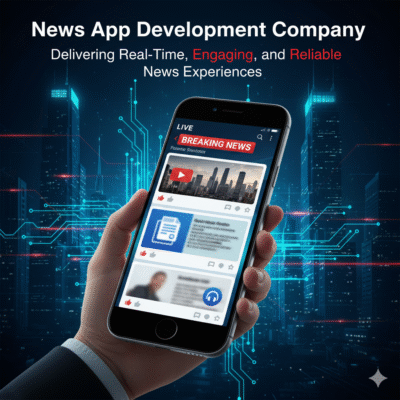Introduction to NFC Business Cards
The business world has evolved dramatically in recent years, and traditional paper business cards are becoming increasingly outdated. NFC business cards represent a revolutionary shift in professional networking, combining cutting-edge technology with practical functionality. These innovative tools use Near Field Communication technology to instantly share contact information, portfolios, and digital content with a simple tap.
Modern professionals need to stand out in crowded markets, and NFC business cards provide the perfect opportunity to make memorable first impressions. When you hand someone an NFC business card, you’re not just sharing your contact details – you’re demonstrating your commitment to innovation and technological advancement.
The surprise factor alone can transform ordinary networking encounters into meaningful business relationships. Clients and prospects remember unique experiences, and NFC business cards deliver exactly that kind of memorable interaction.
Why NFC Business Cards Create Lasting Impressions
Traditional business cards often end up forgotten in wallets or discarded after brief encounters. NFC business cards solve this problem by creating an interactive experience that engages recipients immediately. The moment someone taps your card with their smartphone, they enter your digital ecosystem.
This technology eliminates the friction typically associated with manual data entry. Recipients don’t need to type your information into their phones – everything transfers automatically. This convenience factor significantly increases the likelihood that your contact information will be properly saved and utilized.
The wow factor cannot be underestimated. Most people still haven’t experienced NFC business cards, so presenting one immediately positions you as an early adopter and tech-savvy professional. This perception can be particularly valuable in industries where innovation and forward-thinking are highly valued.
NFC business cards also demonstrate environmental consciousness. By reducing reliance on paper cards, you show commitment to sustainability – a value that resonates strongly with modern consumers and business partners.
Understanding NFC Technology Basics
Near Field Communication operates on electromagnetic induction principles, enabling devices to communicate when brought within close proximity. NFC business cards contain small chips programmed with your digital information, which can be read by NFC-enabled smartphones and devices.
The technology works seamlessly across different platforms and devices. Whether your client uses an iPhone or Android device, NFC cards function consistently. This universal compatibility ensures your networking efforts aren’t limited by device preferences.
Programming NFC cards is surprisingly straightforward. Many providers offer user-friendly apps and platforms that allow you to customize the information and actions triggered when someone taps your card. You can link to websites, social media profiles, digital portfolios, or contact forms.
The range is intentionally limited to a few centimeters, ensuring secure and intentional interactions. Recipients must deliberately tap your card, creating a moment of engagement that traditional cards cannot match.
Setting Up Your NFC Business Card
Creating an effective NFC business card begins with selecting the right provider and card type. Research companies that offer reliable programming services and quality materials. Consider factors like durability, design options, and reprogramming capabilities.
Design plays a crucial role in the initial impact. Your NFC card should maintain professional aesthetics while clearly indicating its digital capabilities. Subtle design elements like NFC symbols or “tap to connect” text help recipients understand the card’s functionality.
Programming your card requires careful consideration of what information to include. Start with essential contact details, but consider adding links to your LinkedIn profile, company website, or digital portfolio. The goal is providing comprehensive information without overwhelming the recipient.
Test your card thoroughly before networking events. Ensure all links work properly and that the information transfers correctly across different devices. Technical glitches during important meetings can undermine the positive impression you’re trying to create.
Creative Ways to Use NFC Business Cards
Beyond basic contact sharing, NFC business cards offer numerous creative applications. Link to personalized video introductions that play when clients tap your card. This approach creates a personal connection even when you’re not physically present.
Create seasonal or event-specific cards that link to relevant portfolios or special offers. For example, a wedding photographer might program cards to display recent wedding galleries during bridal shows.
Use NFC cards as appointment scheduling tools. Program them to link directly to your online booking system, eliminating the back-and-forth typically required to schedule meetings. This approach demonstrates efficiency and professionalism.
Consider creating different versions for various audiences. Your card for potential clients might emphasize testimonials and case studies, while versions for industry peers could focus on collaboration opportunities and professional achievements.
Personalization Strategies for Maximum Impact
Personalization transforms good NFC business cards into exceptional networking tools. Research your clients and prospects before meetings, then customize your card’s linked content to address their specific interests and needs.
Create landing pages specifically designed for NFC card recipients. These pages should provide immediate value while encouraging further engagement. Include relevant case studies, industry insights, or special offers that demonstrate your understanding of their challenges.
Timing your personalization efforts strategically can significantly increase impact. Update your card’s linked content based on current events, industry trends, or seasonal factors that affect your target audience.
Consider creating follow-up sequences triggered by NFC card interactions. When someone taps your card, they could automatically receive a series of valuable emails or resources over the following weeks.
Professional Presentation Techniques
The physical presentation of your NFC business card is just as important as its digital content. Practice smooth, confident delivery that emphasizes the card’s special features without appearing overly eager or gimmicky.
Timing is crucial when introducing NFC functionality. Wait for the right moment in conversations when recipients are engaged and curious about your services. Premature introduction might seem pushy or interrupt important discussions.
Explain the process clearly but concisely. Most people haven’t used NFC business cards, so brief instructions help ensure successful interactions. Simple phrases like “just tap this with your phone” provide sufficient guidance.
Always carry traditional backup cards for situations where NFC might not be appropriate or functional. Some venues have connectivity issues, and older devices might not support NFC technology.
Measuring Success and Follow-up Strategies
Successful NFC business card implementation requires tracking and measurement systems. Use analytics tools to monitor how often your cards are tapped and which content receives the most engagement.
Set up conversion tracking to understand how NFC card interactions translate into business opportunities. Monitor website visits, contact form submissions, and appointment bookings that originate from card taps.
Develop systematic follow-up processes for NFC card interactions. Since you have digital engagement data, you can craft more targeted and relevant follow-up communications than traditional card exchanges allow.
Create feedback loops by asking clients about their NFC card experience. This information helps refine your approach and identify areas for improvement.
Common Mistakes to Avoid
Many professionals make the mistake of overwhelming recipients with too much information or too many options. Keep your NFC card’s functionality focused and purposeful. Decision paralysis can reduce effectiveness significantly.
Technical issues can quickly undermine positive impressions. Regularly test all links and functionality, especially before important networking events or client meetings. Dead links or broken pages create negative associations with your professionalism.
Avoid making NFC cards your only networking tool. They should complement, not replace, traditional relationship-building techniques. Over-reliance on technology can make interactions feel impersonal or gimmicky.
Don’t neglect the physical design and quality of your cards. Even with impressive technology, poor materials or unprofessional design will create negative impressions that overshadow digital innovations.
Future Trends in Digital Networking
The networking landscape continues evolving rapidly, with NFC business cards representing just the beginning of digital transformation. Augmented reality business cards are emerging, offering even more immersive experiences for recipients.
Integration with customer relationship management systems will become increasingly sophisticated, automatically logging interactions and triggering personalized follow-up sequences. This automation will help professionals maintain relationships more effectively.
Artificial intelligence will enable dynamic content customization based on recipient profiles and interaction history. Your NFC card could potentially display different information for different people automatically.
Sustainability concerns will likely drive further adoption of digital business cards as companies seek to reduce environmental impact while maintaining professional networking effectiveness.
FAQ
Q: Do NFC business cards work with all smartphones? A: Most modern smartphones support NFC technology, including recent iPhone and Android models. However, some older devices might not have NFC capabilities.
Q: How much do NFC business cards typically cost? A: Prices vary depending on design complexity and quantity, but expect to pay significantly more than traditional cards. The investment often pays off through improved networking effectiveness.
Q: Can I reprogram my NFC business card with new information? A: This depends on the type of card you purchase. Some are rewritable, while others are programmed once and cannot be changed. Choose based on your needs and budget.
Q: What happens if someone doesn’t have an NFC-enabled phone? A: Always carry traditional backup cards for these situations. You can also include QR codes on your NFC cards as an alternative method for accessing your digital content.
Q: Are NFC business cards secure? A: NFC technology includes security features, but avoid including sensitive information on your cards. Stick to contact details and links to publicly available professional information.
Q: How close do phones need to be to read NFC cards? A: NFC requires very close proximity, typically within a few centimeters. This close range requirement actually enhances security and ensures intentional interactions.
Q: Can I track who uses my NFC business card? A: You can track general usage statistics and website visits, but specific individual identification requires additional consent and privacy considerations.
Q: What should I include on my NFC business card?
A: Focus on essential contact information, professional website, Digital Business Cards LinkedIn profile, and perhaps a digital portfolio. Avoid overwhelming recipients with too many options or irrelevant content.



